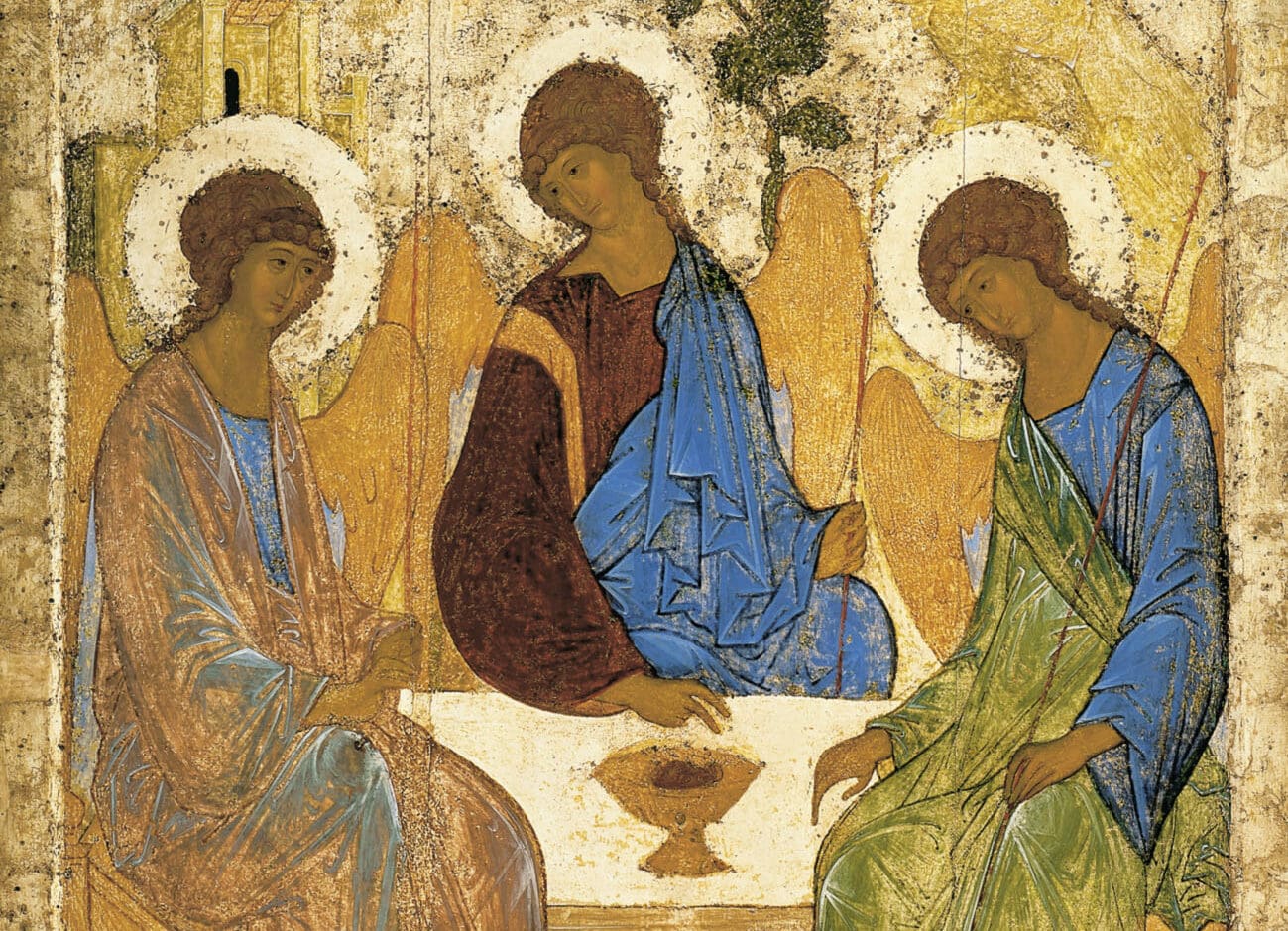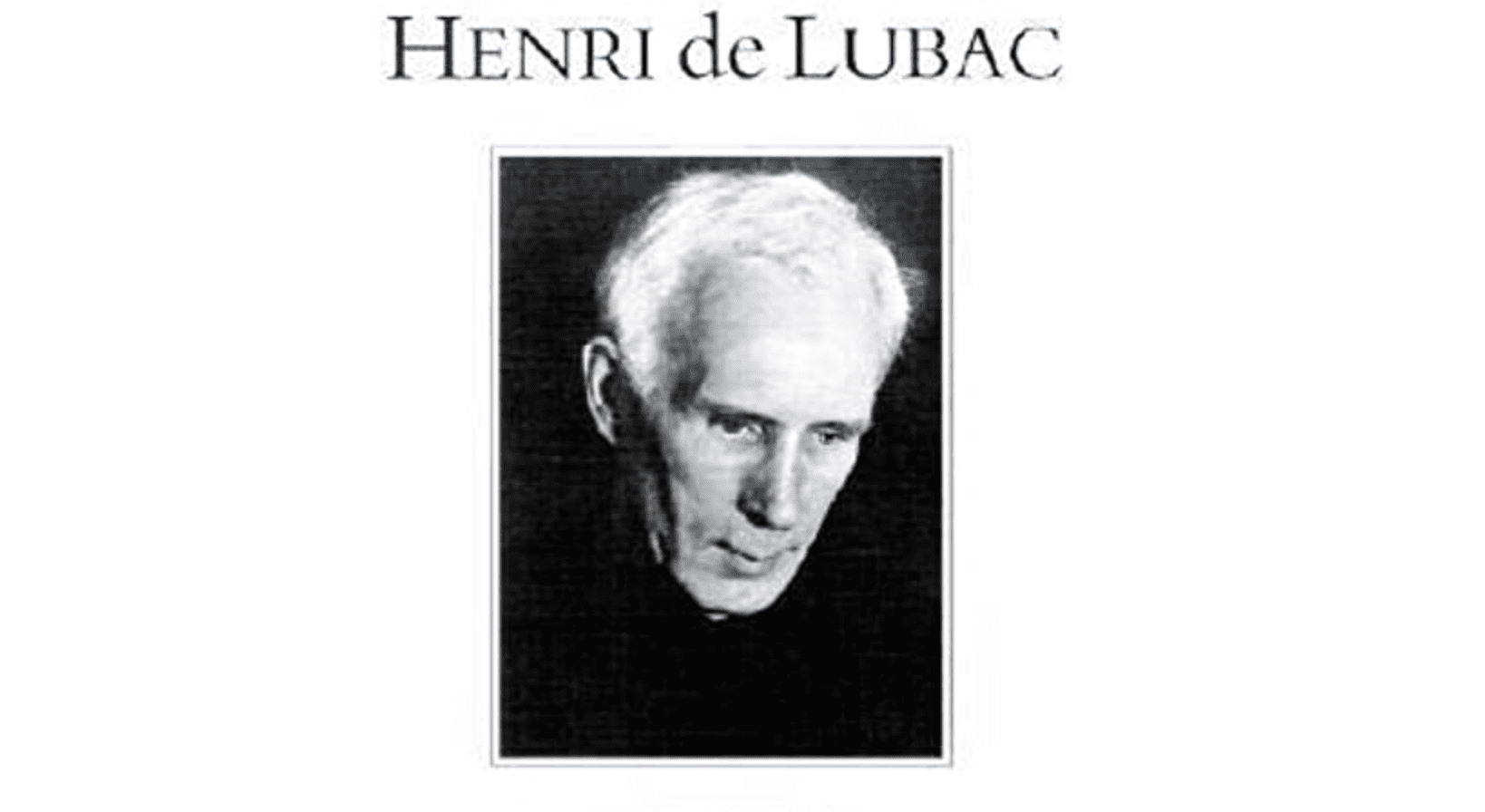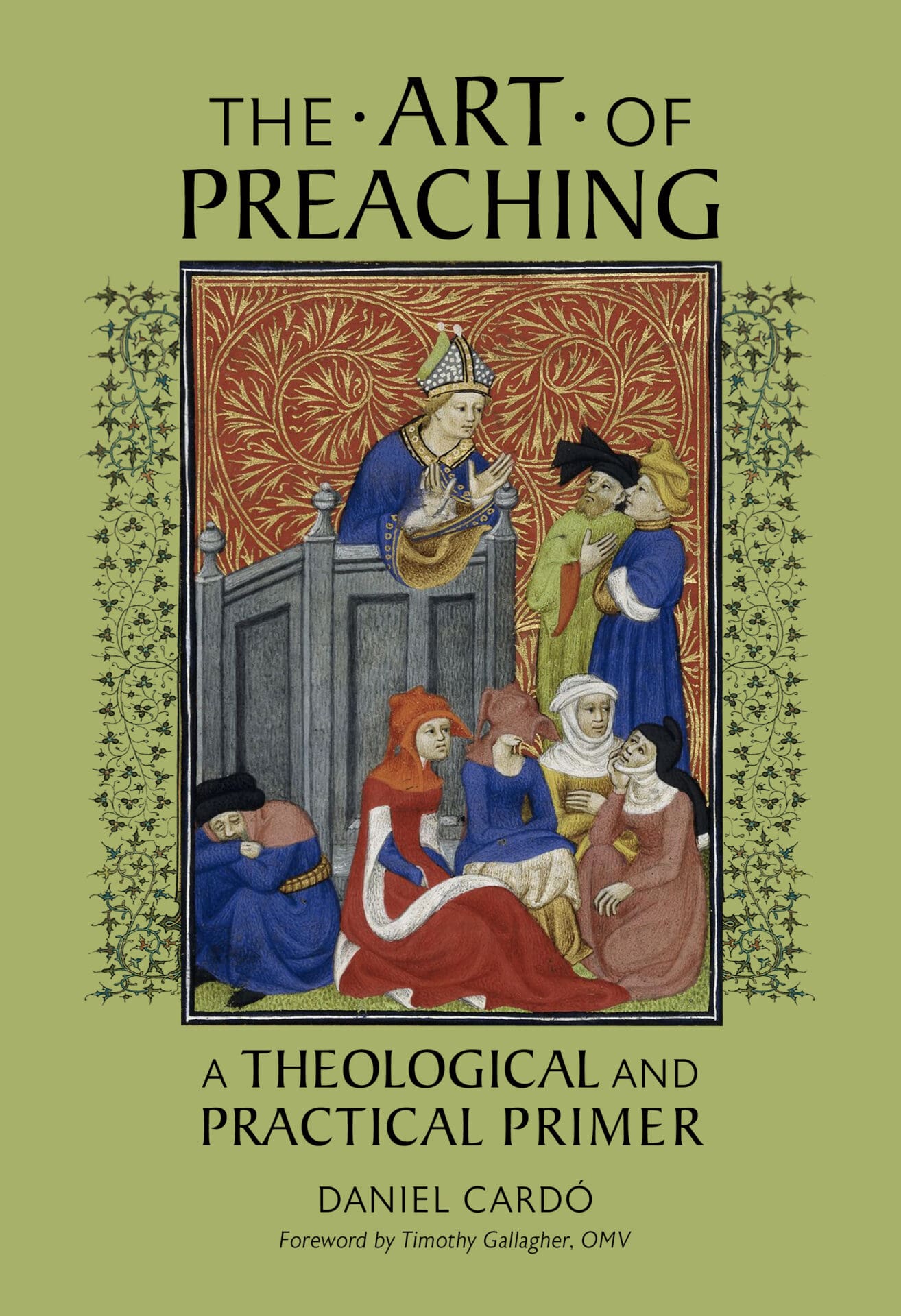In The Spirit of the Liturgy, Romano Guardini defines the purpose of the sacred liturgy: “In the liturgy God is to be honored by the body of the faithful, and the latter is in its turn to derive sanctification from this act of worship.”1 In other words, the liturgy is first and foremost for God’s glorification and secondarily it is for our sanctification.2
“Personalism” was influential on the development of 20th-century philosophy and theology. It emphasized the great subjective value each person has in relationship with others. Personalism offers us an opportunity to reflect anew upon Guardini’s (and the Church’s) understanding of the liturgy, and how the gift of the liturgy can reorient all of the faithful towards the very heart of all doctrinal, ecclesial, and liturgical renewal: the Person of Jesus Christ. Communion with Christ illuminates the meaning and significance of our need to enter into relationship with others.
Liturgical personalism is characterized by the unity between God and the human person.
Joseph Ratzinger articulates the inherent relationship between the Holy Eucharist and the human person with clarity: “[T]he Eucharist is not aimed primarily at the individual. Eucharistic personalism is a drive toward union, the overcoming of the barriers between God and man, between ‘I’ and ‘thou’ in the new ‘we’ of the communion of saints.”[/efn_note]Joseph Ratzinger, Theology of the Liturgy. Collected Works 11 (San Francisco: Ignatius Press, 2014), 53.[/efn_note] Eucharistic or liturgical personalism is characterized by the unity between God and the human person. St. Paul’s word for this unity between the human “I” and the eternal “Thou” is koinonía (“communion”): “The cup of blessing which we bless, is it not a participation [koinonia] in the blood of Christ? The bread which we break, is it not a participation in the body of Christ?” (1 Corinthians 10:16). Unity is an essential characteristic of the Holy Eucharist, which assists the faithful with the fallen tendency to become isolated, selfish individuals.
More recent thinkers such as Romano Guardini, Dietrich von Hildebrand, and Joseph Ratzinger offer us wise insight to appreciate the liturgical personalism that can help us grow in the second aim of the liturgy: our sanctification. The definition of liturgy offered by the liturgical theologian David Fagerberg provides a path towards understanding liturgical personalism. Fagerberg defines the liturgy as “the Trinity’s perichoresis kenotically extended to invite our synergistic ascent into deification.”[/efn_note]David Fagerberg, On Liturgical Asceticism (Washington, DC: The Catholic University of America Press, 2013), 9.[/efn_note] In other words: the human person has been made for communion, which is experienced throughout the liturgy. In imitation of Christ, who gives of himself completely (kenosis), the faithful are called to a life of self-giving love for the sake of others. Finally, our participation in Trinitarian communion and Christ’s kenotic love culminates in our deification. The full development of who we are as persons is forged in our communion with Christ in the liturgy.

Trinitarian Anthropology
The famous icon of the Trinity by Andrei Rublev, the well-known 14th-century Russian iconographer, was written to remind the viewer that he or she is called to enter into communion with the Father, the Son, and the Holy Spirit. There is an empty space at the table between the Father and the Holy Spirit as the faithful see Christ at the center of the icon with a tree representing the Cross upon which he was slain, and a chalice representing the Holy Eucharist. The sacred liturgy enables us to participate in the Paschal Mystery of Christ, which gives us access to the life of grace and a share in the perichoresis (the mutual indwelling) of the Persons of the Blessed Trinity. Liturgical personalism emphasizes first and foremost that we are not created to become isolated, autonomous individuals. Guardini maintains the view that the “liturgy does not say ‘I,’ but, ‘We.’”3
Liturgy has become a passive spectator sport wherein the congregation at best is attentively watching what the celebrant is doing at the altar and beyond. At worst, the congregation is anxiously wanting the liturgy to be over so they can get on with their day. The plague of passivity in liturgical worship has culminated in the erroneous view that one receives Holy Communion as one would a vitamin. There is no preparation in anticipation of such an act. There is no joy in going through a rhythm of rituals as a means to the one end: getting Communion. Hence the popes of the 20th century, the liturgical movement, and the Second Vatican Council have emphasized our need for active participation [participatio actuosa], which begins in the interior and is manifested externally.
Throughout the celebration of the sacred liturgy, we are exhorted by the celebrant with this call to prayer: “Let us pray.” All of the faithful at Mass, as members of the Body of Christ, are being exhorted repeatedly to pray with the priest who is acting in the person of Christ the Head. During the recitation of the Creed, the faithful together profess their belief as a collective, unified “I”—the “I” of the Mystical Body. The words “I believe” are a startling countercultural claim that requires the individual to die to self in a sincere profession of faith. Ratzinger maintains that it takes constant conversion for a person to realize the full significance of the words “I believe.” Ratzinger also notes that the Christian faith is marked by a “personal character,” which is highlighted by its main formula, which is not “I believe in something,” but “I believe in you.”4
The liturgy also offers a form of ascetical discipline that invites and exhorts the faithful to respond and to act in a particular way at particular times. The varying gestures of the body throughout the liturgy are intended to dispose us interiorly and externally towards the different moments within the sacred liturgy. We bow as a sign of reverence. We kneel as a sign of adoration and humility. We stand as a sign of readiness or preparedness. We listen in silence to recollect or prepare ourselves to listen to the Lord in the Liturgy of the Word or to meet the Lord in the Liturgy of the Eucharist. While the surrounding culture may emphasize our autonomy to do what we want when we want with whom we want, the liturgy can form the person to become a worshiper in both spirit and truth.
While the surrounding culture may emphasize our autonomy to do what we want when we want with whom we want, the liturgy can form the person to become a worshiper in both spirit and truth.
In his marvelous book Liturgy and Personality, Dietrich von Hildebrand offers an insightful reflection on how the celebration of the liturgy has the power to transform the person into a true personality who recognizes and responds properly to the natural and supernatural values of this world. Hildebrand argues that true personality is never isolated or autonomous. The liturgy in Hildebrand’s estimation “leads us through Christ to the ‘I-Thou’ communion with our brother and to the ultimate ‘We-communion’ of humanity in the Mystical Body of Christ. In itself it leads us through Christ into the presence of God, where there is no more isolation and no more separation.”5 The liturgy enables us to have a seat at the Trinitarian table of communion in Rublev’s icon because it is the prayer of Jesus Christ the high priest, which we pray per Christum Dominum nostrum (“through Christ our Lord”).
Our Call to Kenosis
The liturgy gives us access to the gift of grace that enables the Christ-life to come to fruition through our own kenosis or self-emptying. As Christ emptied himself (kenosis) to take on the form of a servant (Philippians 2:6-8), so the faithful disciple must take on the form of Christ. Hildebrand maintains with the Church that the essence of holiness is our transformation in Christ, which takes place in the celebration of the liturgy. Our transformation in Christ consists of our “loving adoration of the Father with Christ and in Christ” and our “participation in the sacrifice of Christ and in the uttering of the ‘word.’”[/efn_note]Hildebrand, Liturgy & Personality, 10.[/efn_note] The liturgy gives us access to a share in the life, adoration, praise, and sacrifice of Jesus Christ.
The key word that unlocks the meaning of the Last Supper and the Person of Jesus Christ in Ratzinger’s view is the word “for.” As he develops this point, Ratzinger maintains the view that Christ’s very being is a “being for.”6 In the Last Supper, Jesus gives us the gift of the Holy Eucharist with these words of Institution: “This is my body, given up for you.” These words of Christ, which are reechoed within the celebration of every Mass, are only fully understood in light of the Paschal Mystery wherein Christ lays down his life for all of humanity. As the new Moses, Christ invites the New Israel into his life and his new exodus, which is a life of discipleship “for others.” As a new exodus, the celebration of the liturgy is a realization of the movement from our slavery to sin into the freedom of grace in Christ.
The liturgy begins with the acknowledgement of our sinfulness and our need for God’s mercy in the Confiteor. We also reecho the words of the Roman centurion in the liturgy before receiving Holy Communion: Domine, non sum dignus (“Lord, I am not worthy”). Once again we are humbling ourselves by emptying ourselves of sinful pride to recognize that Christ is the source of our transformation and grace. Freedom from sin is the essential step for us as we strive to put on Christ in our daily lives (Romans 13:14).
The new exodus is led by Christ whose vicarious suffering enables us to enter into the life and sacrificial love of the Incarnate Logos within the liturgy and beyond: “His self-giving is meant to become mine, so that I become contemporary with the Pasch of Christ and assimilated unto God.”7 Jesus Christ has not only suffered for us, but he invites us to enter into the dynamic of his self-sacrificial love. Jesus has emptied himself as a servant, so that we might be taken up into his life and sacrifice to ascend towards the deified life of love “for” others.
Deification: Life in the Logos
Liturgical personalism culminates in the flowering of the true personality of a person through his deification. Under the influence of St. Augustine, Ratzinger affirms the notion that the sacrifice that forms the communion between God and the human person is fully realized by theōsis or divinization.8 The path to divinization is characterized by understanding the sacrifice of Christ on the Cross and the Eucharist as love and not as destruction.
St. Augustine underscores the notion of sacrifice as love: “Such is the sacrifice of Christians, ‘We, the many, are one body in Christ.’ This is the sacrifice as the faithful understand that the Church continues to celebrate in the Sacrament of the Altar in which it is clear to the Church that she herself is offered in the very offering she makes to God.”9 The sacrificial offering of the Incarnate Logos within the Eucharist must become the offering of the faithful within the celebration of the liturgy and beyond.
The faithful are called to participate actively in the sacrifice of the Mass both in the liturgy itself and as a way of life.
During the celebration of the Mass, the priest offers this prayer: “Pray, brethren, that my sacrifice and yours may be acceptable to God, the almighty Father” (emphasis added). The faithful are called to participate actively in the sacrifice of the Mass both in the liturgy itself and as a way of life. In the Roman Canon and St. Paul’s Epistle to the Romans (12:1), Ratzinger argues that the petition remains the same: “We ask that the Logos, Christ, who is the true sacrifice, may himself draw us into his act of sacrifice, may ‘logify’ us, make us ‘more consistent with the word,’ ‘more truly rational,’ so that his sacrifice may become ours and may be accepted by God as ours, may be able to be accounted as ours.”10
In light of the sacrifice of Christ on the Cross, the sacrifice of love is not simply a spiritual act. This act must become concretely expressed in and through the body. The sacrifice of the Eucharist becomes the foundation for the expression of charity and the sources of the Church’s call to mission. The saints are a living testimony to the flowering of a full liturgical personality, which is characterized by a love for neighbor that flows out of the love of God within the sacred liturgy. The liturgy enables the person to experience the flourishing of personality from the font of the liturgy “to the extent that he gives himself up to Christ and follows Christ, living from Christ, with Christ, and in Christ—he lives no more but Christ lives in him: he thus participates in the unlimited breadth and fullness of Christ.”11
Formation of Liturgical Persons
Liturgical personalism draws upon the insights of personalism and highlights the liturgy as the source and summit of our true identity as persons. In response to modernity’s reduction of the human person, liturgical personalism reminds all of the faithful that they are made for Trinitarian communion that is ordered towards the self-giving love of Christ. Perseverance in the cooperation with grace to becoming a living sacrifice of love is the path towards divinization. The ongoing challenge for the faithful remains our need for clearer and more intentional liturgical formation at all levels. Hildebrand, Guardini, and Ratzinger remind us through their writings that such formation begins with the celebration of the liturgy itself. Their insights into the true spirit of the liturgy are a treasure that verifies the insight into liturgical personalism that was articulated by St. Irenaeus of Lyon: “The glory of God is the living man, but the life of man is the vision of God.”12
Roland Millare serves as vice president for curriculum and program director of Shepherd’s Heart (a continuing education and formation program for priests and deacons) for the St. John Paul II Foundation, Houston, TX, and as an adjunct professor of theology for deacon candidates at the University of St. Thomas School of Theology at St. Mary’s Seminary, Houston, TX. He earned a doctorate in sacred theology (STD) at the Liturgical Institute/University of St. Mary of the Lake, Mundelein, IL, and is the author of the book A Living Sacrifice: Liturgy and Eschatology in Joseph Ratzinger (Emmaus Academic).
Footnotes
- Romano Guardini, The Spirit of the Liturgy, trans. Ada Lane (New York: The Crossroad Publishing Company, 1998), 19.
- Catechism of the Catholic Church, §1157.
- Guardini, The Spirit of the Liturgy, 36.
- Joseph Ratzinger, Introduction to Christianity, trans. J. R. Foster (San Francisco: Ignatius Press, 2004), 79.
Dietrich von Hildebrand, Liturgy & Personality (Steubenville: The Hildebrand Project, 2016), 32-33.- Joseph Ratzinger, Jesus of Nazareth: Holy Week: From the Entrance into Jerusalem to the Resurrection, trans. Vatican Secretariat of State (San Francisco: Ignatius Press, 2011), 134.
- Ratzinger, Theology of the Liturgy, 34.
- Ratzinger, Theology of the Liturgy, 551.
- St. Augustine, De Civitate Dei, X, 6.
- Ratzinger, Theology of the Liturgy, 350.
- Hildebrand, Liturgy & Personality, 17.
- Irenaeus of Lyon, Adversus Haereses 4, 20, 7.


